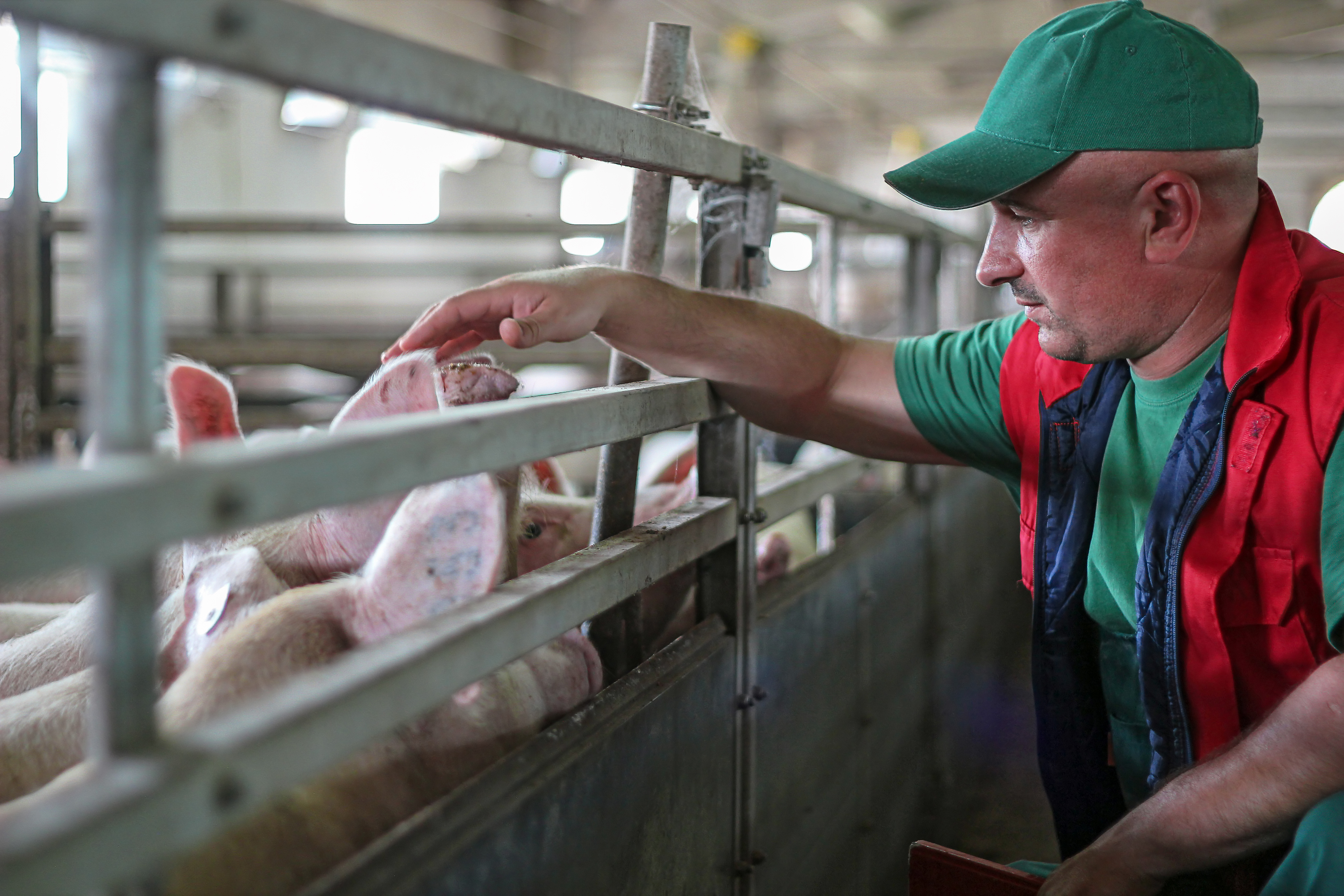



The profits of good mothers
Good sows are the basis of a good pig herd. Investing in sow health and calm behaviour will pay off in terms of sow productivity and piglet growth. But how much exactly?Sow performance
Sows are like Olympic champions when it comes to raising piglets. The number of live born piglets is due to genetic selection usually more than the sow can comfortably nurse. Although a gilt may have been selected for a high number of teats, not all of them may be functional and the amount of functional teats declines with parity. Checking the number of functional teats before farrowing will help in making the decision if cross-fostering or milk replacer is needed. Sow feed intake will directly translate into milk production, it is therefore important to encourage her to eat well. Factors that may reduce feed intake are pain, stress, a high environmental temperature (>25°C), a dirty feed trough, and feed. Simple actions such as pain relief, cleaning the trough, providing cool air for the sow and adding something sweet to the feed for sows that don’t eat well can make the difference for sow health and piglet growth.
The influence of human handling
Sows easily get distressed by human interference. Their nervousness and defensiveness partly depends on the breed or genetic line, but is largely determined by how regularly they interact with stockworkers and the conditions surrounding those interactions. Often the only association sows have with humans is negative (rough handling, injections, handling piglets). This instigates alarm whenever a human enters the farrowing house. To change this, the sows need to develop a neutral or positive association with humans. To get calm sows in the farrowing house it is important to start at gilt rearing. Calm and positive human-animal contact does not need to take much time. Positive effects on behaviour can be seen by scratching the sow behind the ears for 15 seconds upon inspection. Calm sows will stand up less frequently and this reduces the risk of crushing. They will also vocalise less, and therefore cause fewer disturbances to neighbouring sows.

Calm and positive human-animal contact does not need to take much time. Positive effects on behaviour can be seen by scratching the sow behind the ears for 15 seconds upon inspection
Selecting for calm behaviour
Behavioural traits are moderately heritable. That means that it is possible to reduce aggression and increase calm behaviour on farm by genetically selecting against and for those behaviours, respectively. To do so, it is best to start from the sow population by giving each sow at the day of piglet handling a score of 1-3 for their response when catching the piglets for processing. An example of a simple scoring system could be 1: calm; 2: responding but not aggressive; 3: aggressive towards humans. Note the score on the sow card for future reference. It is best not to keep sows that show score 3. Defensive sows can be very good mothers by being attentive to the piglets, but that should not be the only criteria for keeping them. Although they may raise good piglets, the effect of their defensive behaviour may cost more in the long term. The nervous defensive behaviour of this sow may indirectly result in loss of piglets from other sows due to crushing and it is therefore not beneficial per se to keep such sows. Further down the line the sow’s behaviour may also result in more aggression or nervousness in the growing pigs.
Strategy to gain good mothers
To be able to select for good replacement gilts, there needs to be a choice. Only inseminating the minimum number of sows with dam line semen may make it impossible to select for good replacement gilts within the number of female piglets born. Inseminating more sows with dam line semen will give more leaner, slower growing pigs for slaughter but this will be compensated by having better sows in future. Select female dam line piglets at weaning for teat number, good leg strength and good body condition. Skin lesions on the front part of the body indicate active involvement in fights and when given the choice it is best not to select them.
Cost-benefit of investing in good mothers
Let’s suppose that a good mother gives on average 1 piglet more per year than a bad mother. This seems a realistic number as stressed or less careful sows easily lose a piglet due to crushing, savaging or poor milk production. Selecting for strong legs will also increase the longevity of the sow (not calculated here). The below calculation is based on average numbers of pig production in UK. Prices will of course fluctuate and depend on overall performance. In the example of a 100 sow herd, twice the number of sows is inseminated with dam line semen in order to have the possibility to select replacement gilts on preferred characteristics. This prevents needing to replace sows with lower quality gilts due to lack of choice, or being forced to keep sows that would be better being replaced. The net benefit of this choice would be £313.80 per 100 sows. The main take home message is therefore to make decisions that create long-term benefits that improve the pig herd as a whole.
.jpg)
A cost-benefit analysis of investing in good mothers based on increasing the number of sows inseminated with dam line semen
Irene Camerlink
PhD and post-doc researcher, University of Veterinary Medicine, Vienna, Austria

Irene Camerlink is a researcher at the University of Veterinary Medicine in Vienna (Vetmeduni) where she works on social behaviour in pigs and its relationship to neurobiology and animal welfare.
She obtained a PhD in Animal Sciences (animal genetics and adaptation physiology) from Wageningen University, Netherlands, in 2014.
From 2014 to 2018 she worked as postdoctoral researcher at Scotland’s Rural College (SRUC) in Edinburgh, UK, on aggressive behaviour between pigs and how this influences their welfare. She collaborates across Europe and Asia (including China) on topics related to pig behaviour and welfare.
1 Bell, J. M. (1964). A study of rates of growth of Yorkshire, Lacombe, Landrace, and crossbred pigs from birth to 200 lb. Canadian Journal of Animal Science, 44(3), 315-319
2 https://www.pork.org/facts/sta... ; or 1.26 gbp / kg dead weight (ADHB Pork; https://pork.ahdb.org.uk/media/274535/2016-pig-cost-of-production-in-selected-countries.pdf)
3 http://www.thepigsite.com/stockstds/3/pig-farm-targets/
4 https://pork.ahdb.org.uk/media/274535/2016-pig-cost-of-production-in-selected-countries.pdf









